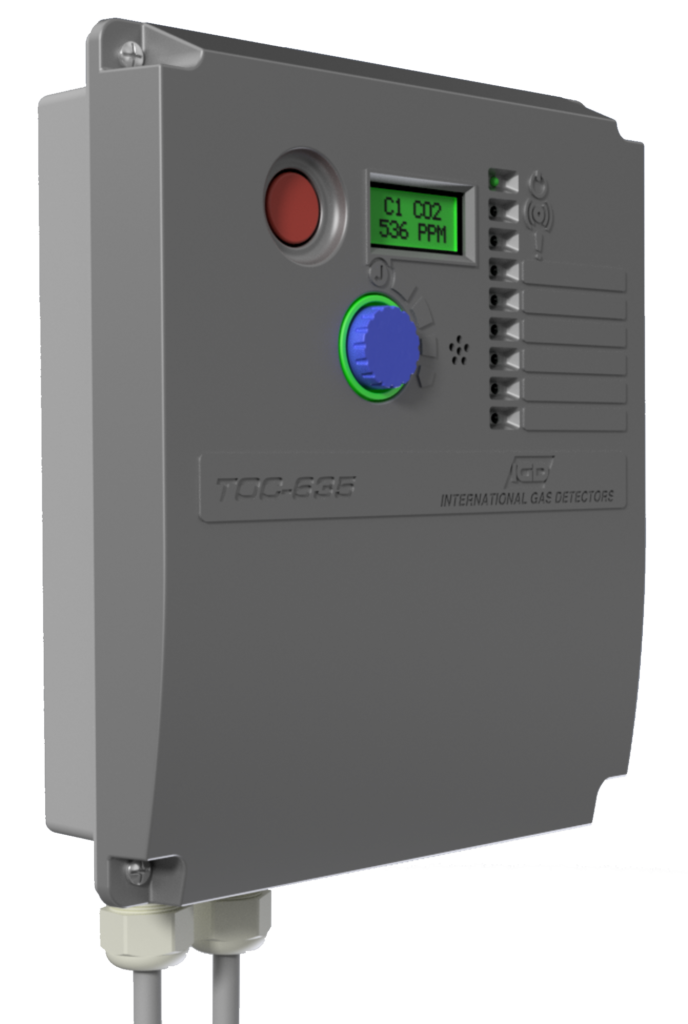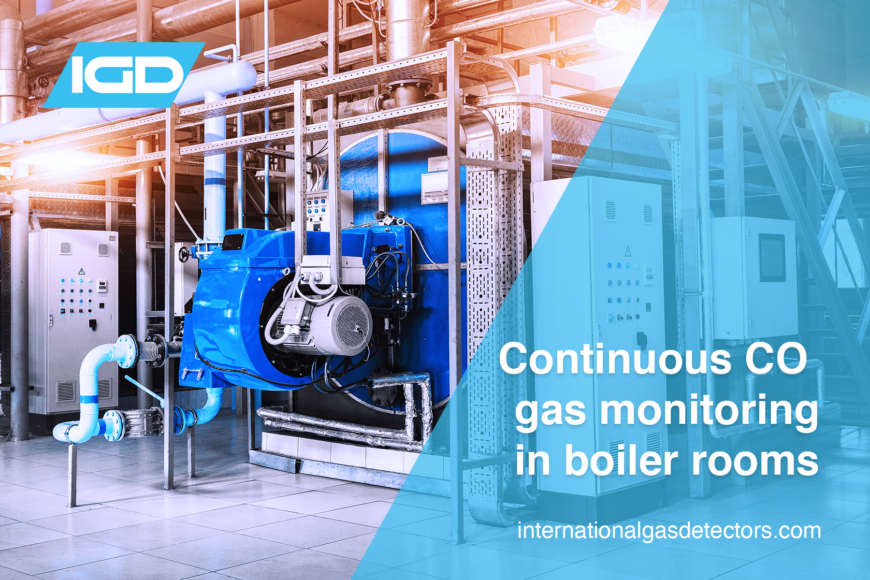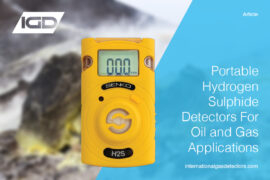Incomplete combustion of fuels, such as gas and coal, leads to the production of carbon monoxide (CO). Present in the normal atmosphere at 0.03 – 0.20 parts-per-million (ppm), CO is a colourless, odourless gas that is lethal with UK occupational exposure levels listed at 20ppm for 8hr (time weighted average) and 100ppm for 15minutes (Short Term Exposure Level). Driving a non-electric automobile, smoking a cigarette and lighting a barbeque are all examples of activities that generate CO. However, as these are commonly performed in highly ventilated environments, the health risks from CO poisoning are minimal. Conversely, boilers are generally indoor appliances, therefore CO produced by a faulty or poorly ventilated gas boiler can rapidly endanger the lives of all those exposed. This article aims to how identify why you require a continuous CO gas monitoring system in your boiler room.
Understanding the Dangers of CO Poisoning
By preventing the ability for blood to carry oxygen, CO poisoning can cause headaches, dizziness, nausea, stomach pain and shortness of breath, at relatively low levels. Health can rapidly deteriorate if an individual remains in a high CO environment, with more severe symptoms including vertigo, heart attacks, seizures and loss of consciousness. Death can quickly follow. As CO can pass through gypsum wallboard, individuals have been reported dying from CO produced in neighbouring accommodations. While patient deaths from CO poisoning have been in decline in the last 25 years, 4.6 deaths per million are estimated to result from CO poisoning worldwide. Furthermore, colder nations that rely more on heating systems are at greater risk of CO poisoning that warmer countries.
Continuous CO Gas Monitors from International Gas Detectors
We (International Gas Detectors Ltd) offers a range of solutions for continuous CO gas monitoring. For smaller boilers, a MICRO controller or 750B series standalone gas detector can be installed both can also connect to the boiler control unit, BMS or fire system. For larger boiler installations, where the ceiling is too high for a conventional detector, the 750S Series Aspirated detectors and gas hoods are an ideal solution. The continuous samplers allows individuals to place them at a convenient positions; meaning an engineer is not required to have a work at heights permit to service the system.

Looking for continuous CO gas monitors?
The insidious nature of CO requires that individuals with a gas boiler or living adjacent to someone with a gas boiler ensure their own safety by procuring a continuous CO gas monitor. Indeed, evidence attests that most CO deaths are preventable and underestimating the severity of CO poisoning may contribute to fostering adverse outcomes. Through continuous CO gas monitoring, a safe environment can be ensured and faulty boilers can be rapidly identified. Moreover, continuous CO gas monitoring can provide peace of mind and raise awareness of the dangers of CO. Contact a member of the IGD team today if you would like to learn more.
Portable CO Detectors for Personal Safety
It is important for those visiting boiler rooms, such as boiler engineers and gas detection engineers, to have personal detection for CO and Flammable. This is due to engineers not knowing if the site has a working continuous detection system in place and provides a last line of defence for detecting leaks. These devices can be carried or worn as PPE or clipped to clothing and are supported by a long battery life. IGD can provide single gas CO portable gas detectors or multi gas detectors which include CO and Flammable sensors on the same unit. With our strategic partnership with Senko, we can hold stock for fast delivery and provide service on Senko portable monitors. portable gas detectors are available.
References:
Mattiuzzi, C. and Lippi, G. (2019) Worldwide epidemiology of carbon monoxide poisoning. Human and Experimental Toxicology.
https://doi.org/10.1177/0960327119891214
nhs.uk. Carbon Monoxide Poisoning. (2021).
https://www.nhs.uk/conditions/carbon-monoxide-poisoning/
Vermesi, I., Restuccia, F., Walker-Ravena, C., et al. (2018) Carbon Monoxide Diffusion Through Porous Walls: Evidence Found in Incidents and Experimental Studies. Frontiers in Built Environment.
https://doi.org/10.3389/fbuil.2018.00044




